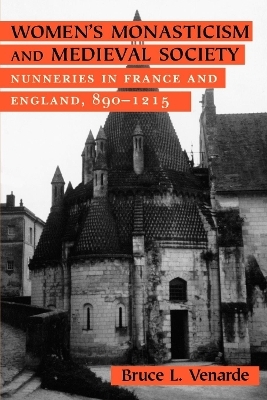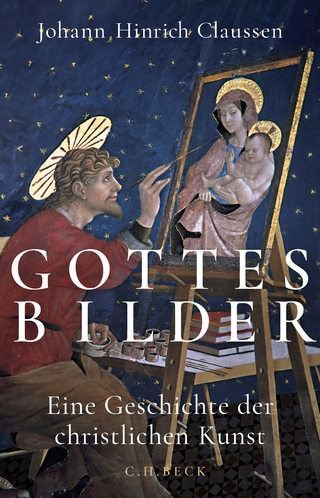
Women's Monasticism and Medieval Society
Nunneries in France and England, 890–1215
Seiten
1997
Cornell University Press (Verlag)
978-0-8014-3203-3 (ISBN)
Cornell University Press (Verlag)
978-0-8014-3203-3 (ISBN)
- Lieferbar (Termin unbekannt)
- Versandkostenfrei
- Auch auf Rechnung
- Artikel merken
In this engaging work, Bruce L. Venarde uncovers a largely unknown story of women's religious lives and puts female monasticism back in the mainstream of medieval ecclesiastical history. To chart the expansion of nunneries in France and England during...
In this engaging work, Bruce L. Venarde uncovers a largely unknown story of women's religious lives and puts female monasticism back in the mainstream of medieval ecclesiastical history. To chart the expansion of nunneries in France and England during the central Middle Ages, he presents statistics and narratives to describe growth in broad historical contexts, with special attention to social and economic change.
Venarde explains that in the years 1000–1300 the number of nunneries within Europe grew tenfold. In the eleventh and twelfth centuries, religious institutions for women developed in a variety of ways, mostly outside the self-conscious reform movements that have been the traditional focus of monastic history. Not reforming monks but wandering preachers, bishops, and the women and men of local petty aristocracies made possible the foundation of new nunneries. In times of increased agrarian wealth, decentralization of power, and a shortage of potential spouses, many women decided to become nuns and proved especially adept at combining spiritual search with practical acumen.
This era of expansion came to an end in the thirteenth century when forces of regulation and new economic realities reduced radically the number of new nunneries. Venarde argues that the factors encouraging and inhibiting monastic foundations for men and women were much more similar than scholars have previously assumed.
In this engaging work, Bruce L. Venarde uncovers a largely unknown story of women's religious lives and puts female monasticism back in the mainstream of medieval ecclesiastical history. To chart the expansion of nunneries in France and England during the central Middle Ages, he presents statistics and narratives to describe growth in broad historical contexts, with special attention to social and economic change.
Venarde explains that in the years 1000–1300 the number of nunneries within Europe grew tenfold. In the eleventh and twelfth centuries, religious institutions for women developed in a variety of ways, mostly outside the self-conscious reform movements that have been the traditional focus of monastic history. Not reforming monks but wandering preachers, bishops, and the women and men of local petty aristocracies made possible the foundation of new nunneries. In times of increased agrarian wealth, decentralization of power, and a shortage of potential spouses, many women decided to become nuns and proved especially adept at combining spiritual search with practical acumen.
This era of expansion came to an end in the thirteenth century when forces of regulation and new economic realities reduced radically the number of new nunneries. Venarde argues that the factors encouraging and inhibiting monastic foundations for men and women were much more similar than scholars have previously assumed.
Bruce L. Venarde is Assistant Professor of History at the University of Pittsburgh.
| Erscheint lt. Verlag | 13.3.1997 |
|---|---|
| Verlagsort | Ithaca |
| Sprache | englisch |
| Maße | 152 x 229 mm |
| Gewicht | 907 g |
| Themenwelt | Religion / Theologie ► Christentum ► Kirchengeschichte |
| ISBN-10 | 0-8014-3203-0 / 0801432030 |
| ISBN-13 | 978-0-8014-3203-3 / 9780801432033 |
| Zustand | Neuware |
| Haben Sie eine Frage zum Produkt? |
Mehr entdecken
aus dem Bereich
aus dem Bereich
von Athanasius bis Gregor dem Großen
Buch | Softcover (2024)
C.H.Beck (Verlag)
CHF 18,90
eine Geschichte der christlichen Kunst
Buch | Hardcover (2024)
C.H.Beck (Verlag)
CHF 44,75


